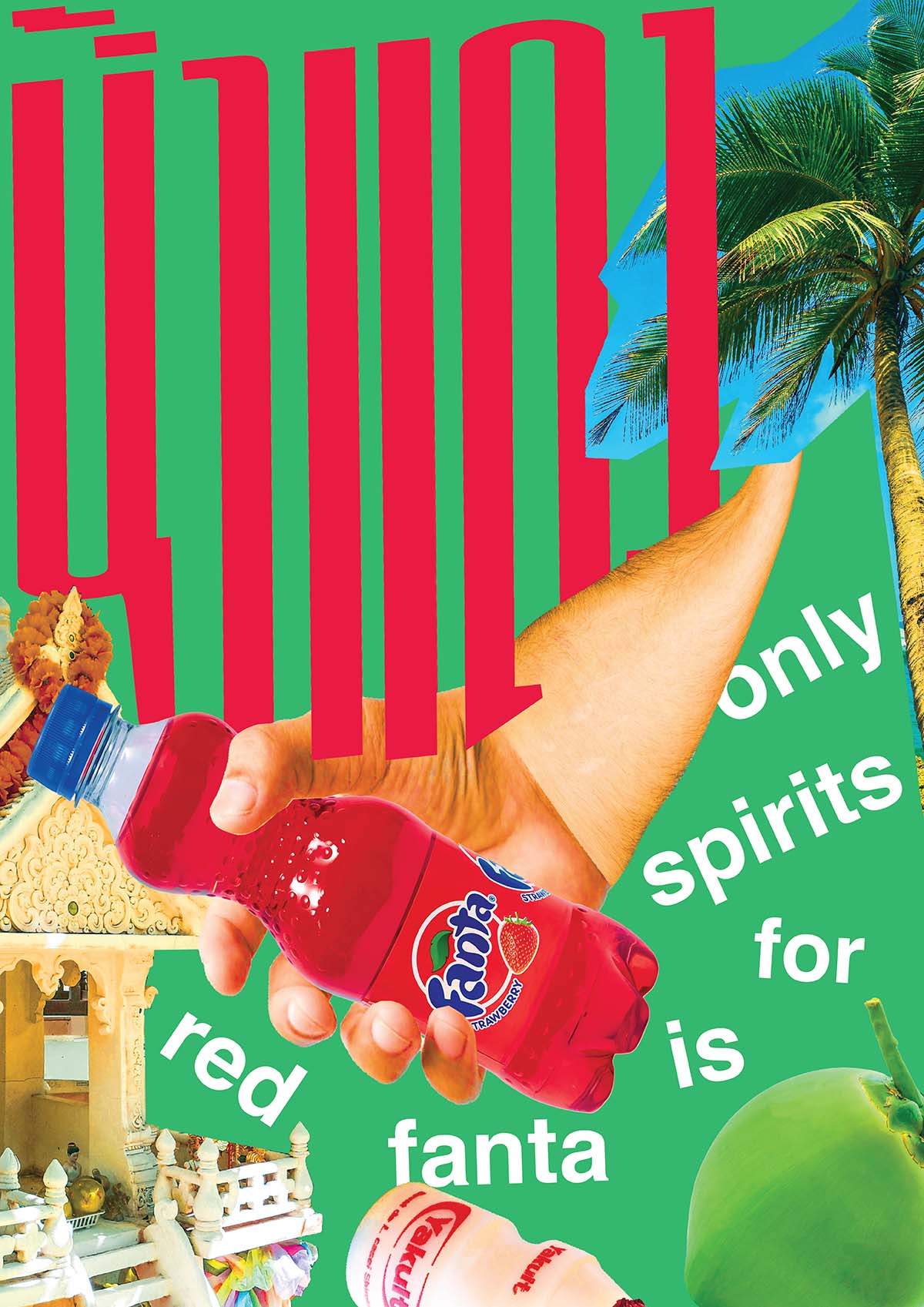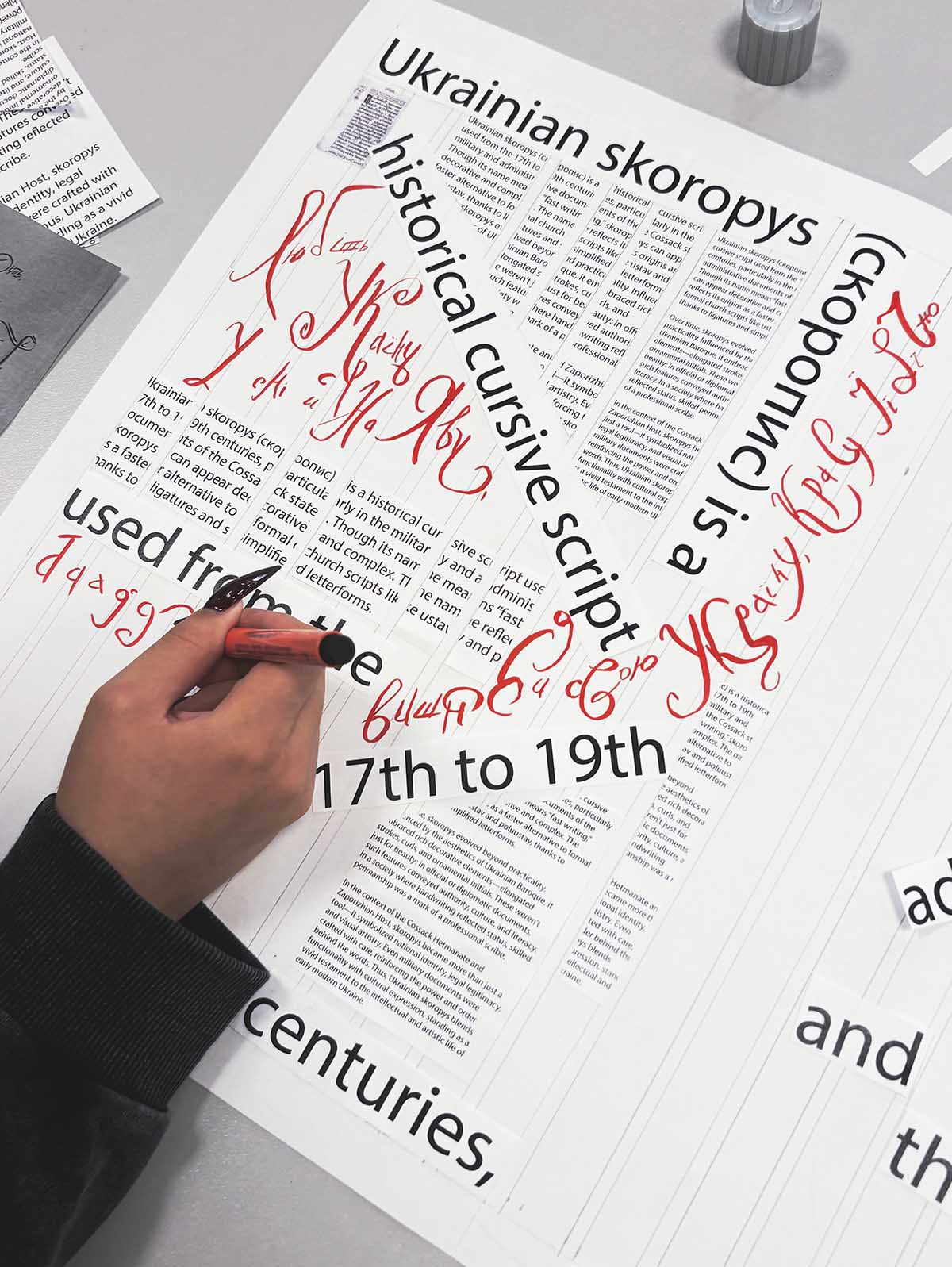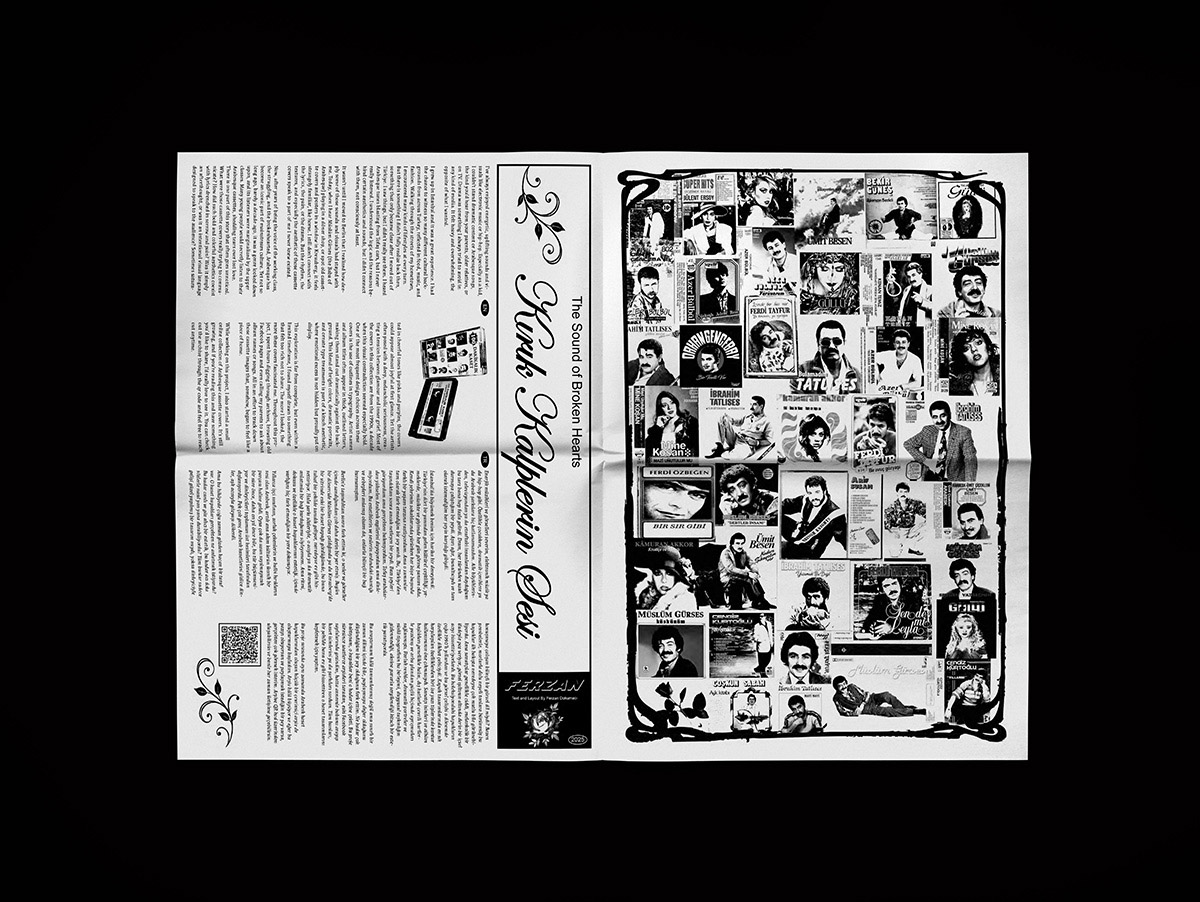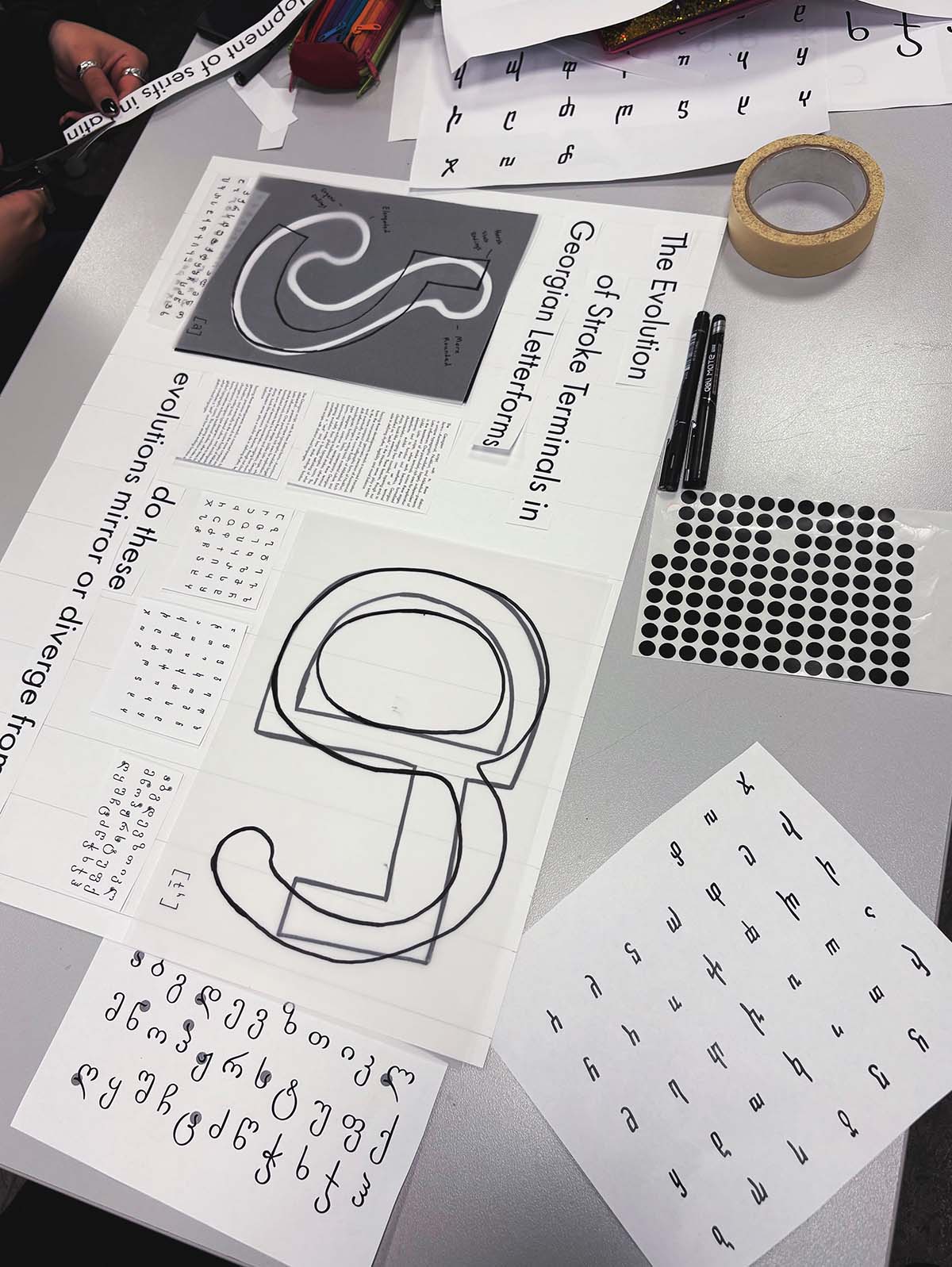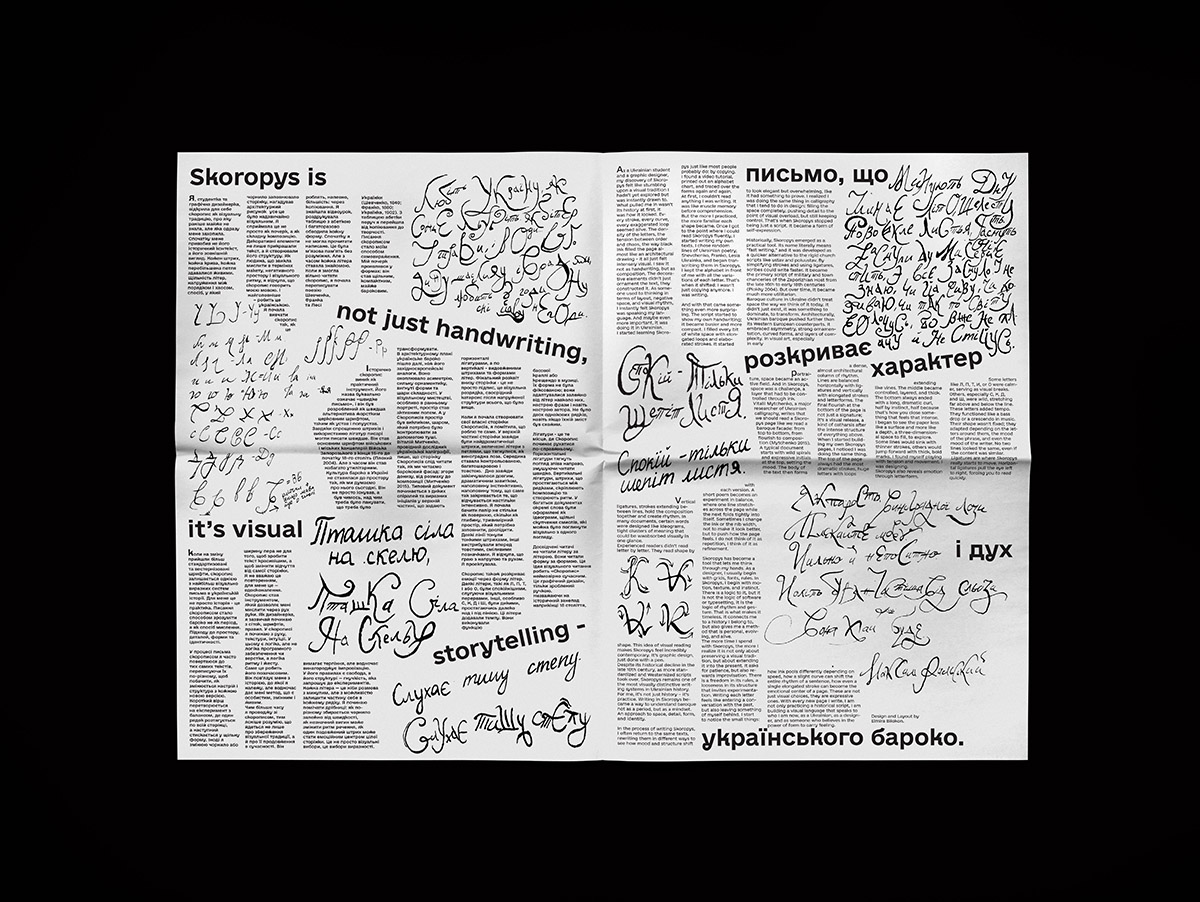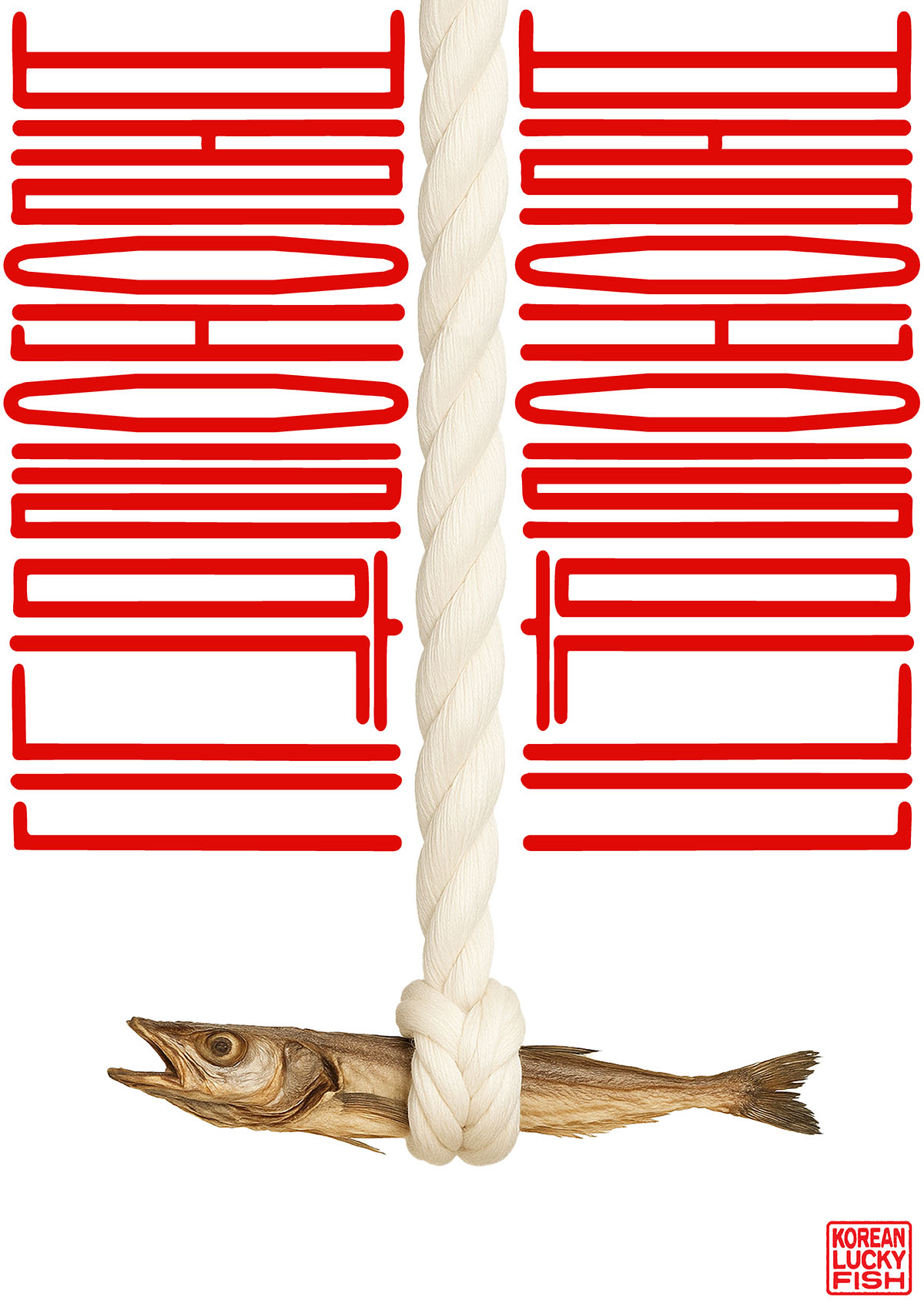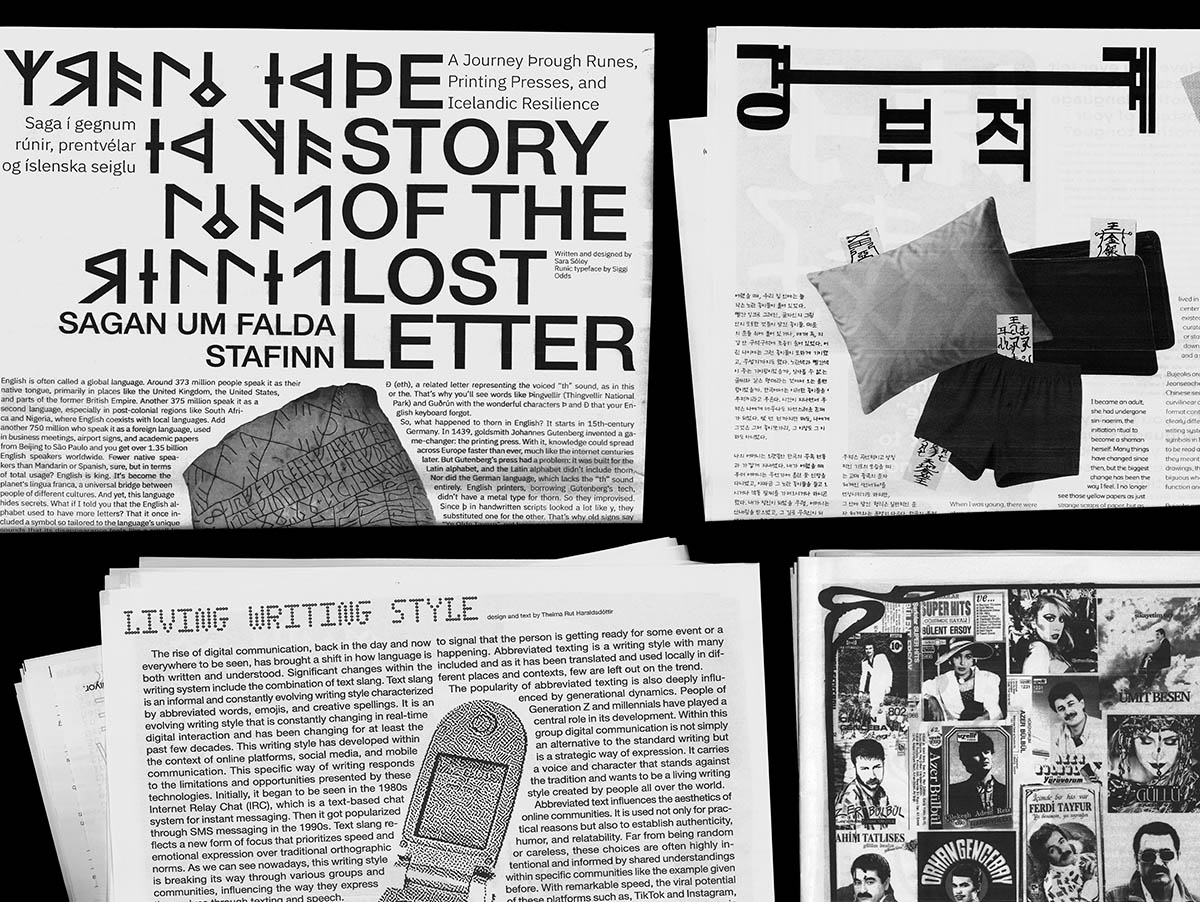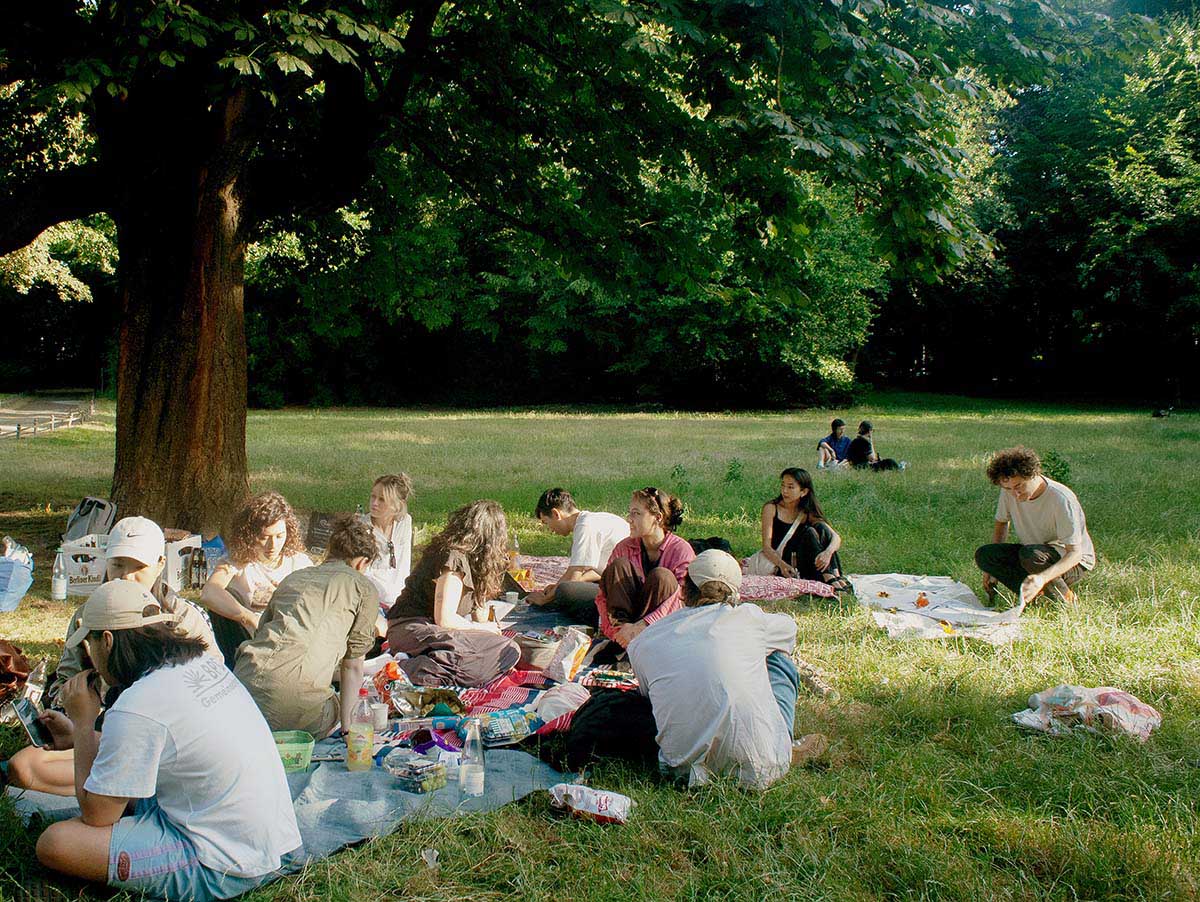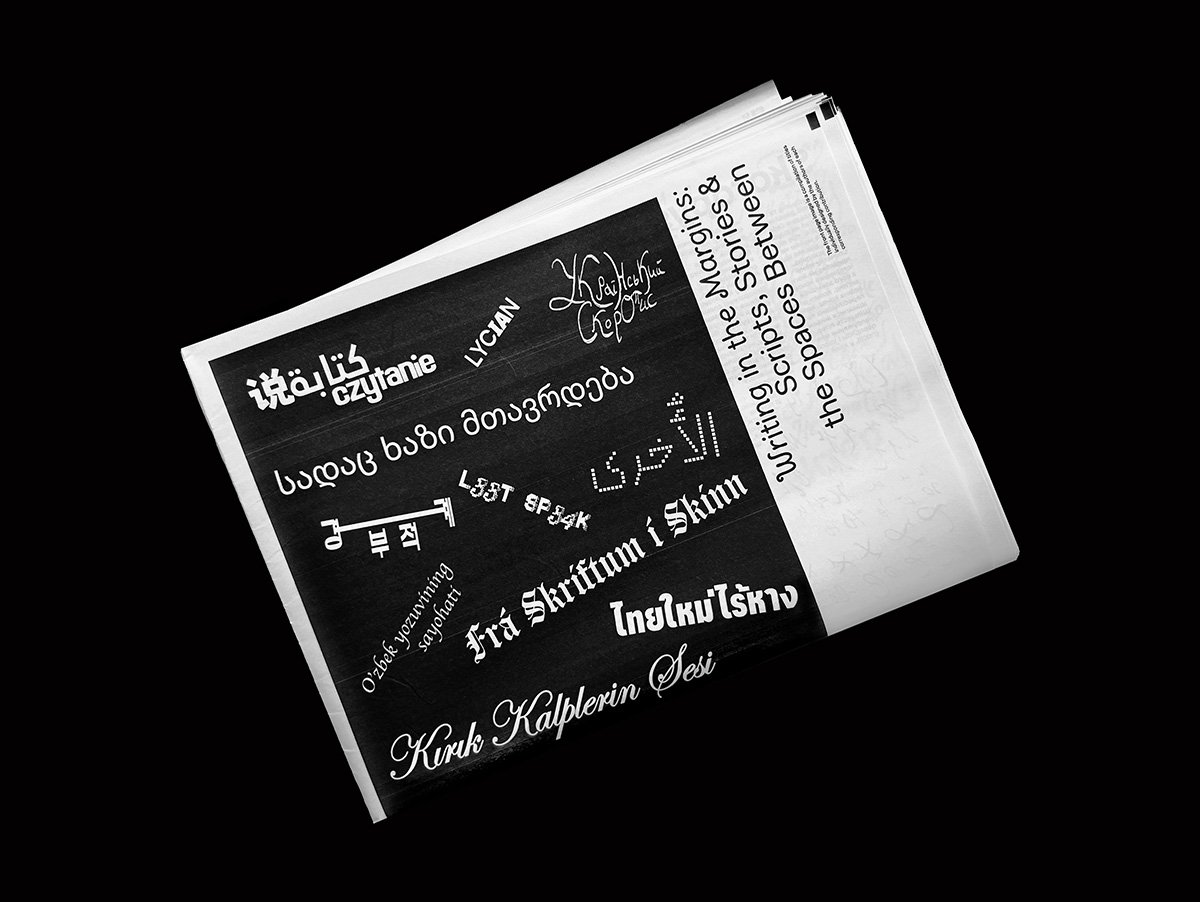Writing in the Margins
Scripts, Stories and the Spaces Between
»Cultures are complex, layered and nuanced. Within each culture, subcultures exist. There are regional differences, minorities within minorities, and countless stories and histories.«
Students from the Graphic Design and Visual Communication program at Berlin International University of Applied Sciences have published the independent newspaper Writing in the Margins. With the academic guidance of Barbora Demovič, Mio Kojima and Muj Abdulzade, the 4th‑semester design students worked collectively to reclaim space for diverse writing traditions, scripts, alphabets, non‑conforming letterforms, vernacular typography, forgotten glyphs and their underrepresented stories.
Over ten weeks, Writing in the Margins developed as one of the key assignments in the Intercultural Design course. The class is shaped by the multicultural character of Berlin International and rooted in the belief that design can either reinforce or challenge power imbalances and the Western‑centric status quo.
The main goal of the Intercultural Design course is to strengthen the ability to critically identify and understand cultural stereotypes, orientalism and othering in visual communication and beyond. Through peer‑to‑peer learning, students share knowledge about the cultures to which they feel a sense of belonging and contribute to shaping a more authentic and diverse narrative around cultural identities and their visual representation. Cultures are complex, layered and nuanced. Within each culture, subcultures exist. There are regional differences, minorities within minorities, and countless stories and histories. There is no single accurate way to represent a culture holistically.
In the Roots Reveal assignment, students reflected on cultures they feel connected to, choosing one micro‑detail that resonated with them in both positive and critical ways. Through research, gathering visual references and positioning these cultural details within historical and social contexts, they developed a poster design.
In the Writing in the Margins assignment, students explored the historical, social and political contexts of typography and scripts.
As of June 2025, Google Fonts offers 1,633 typeface families for Latin script in contrast to merely 261 typeface families for Cyrillic, 60 for Devanagari, 52 for Arabic, and 39 for Korean. Swiss-style grotesque typefaces continue to dominate contemporary graphic and UI design, mainly due to their reputation for being universal, neutral, and highly legible, reinforcing the Western-centric design status quo. What occurs when certain scripts are marginalized or adapted under colonial influence? Can writing systems, scripts, and letterforms challenge conventional design and societal norms? And how can power relations be renegotiated when designing with two or more scripts?
Rooted in their personal interests, lived experiences, senses of belonging, and cultural contexts, the contributions by Elmira Bilokon, Klea Çelmanaj, Ferzan Dokumacı, Sarah Elgayed, Laman Gasimova, Inci Isik Goktas, Zeynep Gölbey, Anna Lena Halldórsdóttir, Thelma Rut Haraldsdóttir, Thianon Klausmann, Natalia Kvavilashvili, Azra Nasirlioglu, Sara Sóley, Jakub Pawlowski, Elif Sarihan, Diana Saidova, Hikaru Shiozawa, Laura Smektalska, Mariia Vlasina, Alexander Wagner, Oriana Winiarski, and Hanul Yim explore the rich histories and lives of letters, scripts, and writing systems.
They look into the role of adapting writing systems within diasporic communities, explore the act of writing in Korean Shamanic practice, tell stories of letterforms in tattoo and graffiti cultures, engage hands‑on with Cyrillic handwriting scripts, feature the work of women from Polish School of Poster, focus on the type and title design from Arabesque cassette tapes, and play with the crossroads of writing and cooking. Some other contributions focus on various political and cultural shifts and their influence on writing traditions, centering histories from Uzbekistan, Turkey, Iceland, Thailand, Russia, Albania, Georgia, Greece, and the Arabic‑speaking regions. They cover peculiar stories of single characters, glyphs, scripts, and alphabets, problematize Western influences, and highlight the underrepresented.
Further contributions turn towards digital environments and share how gaming subcultures, hacker communities, texting, and chatroom communication have sparked the creation of new writing forms, whether through modified characters or the invention of entirely new scripts. The newspaper was published in an edition of 45 and was released on June 3rd in Berlin.
© Pictures by Thelma Haraldsdóttir, Hanul Yim, Hikaru Shiozawa and Thianon Klausmann
